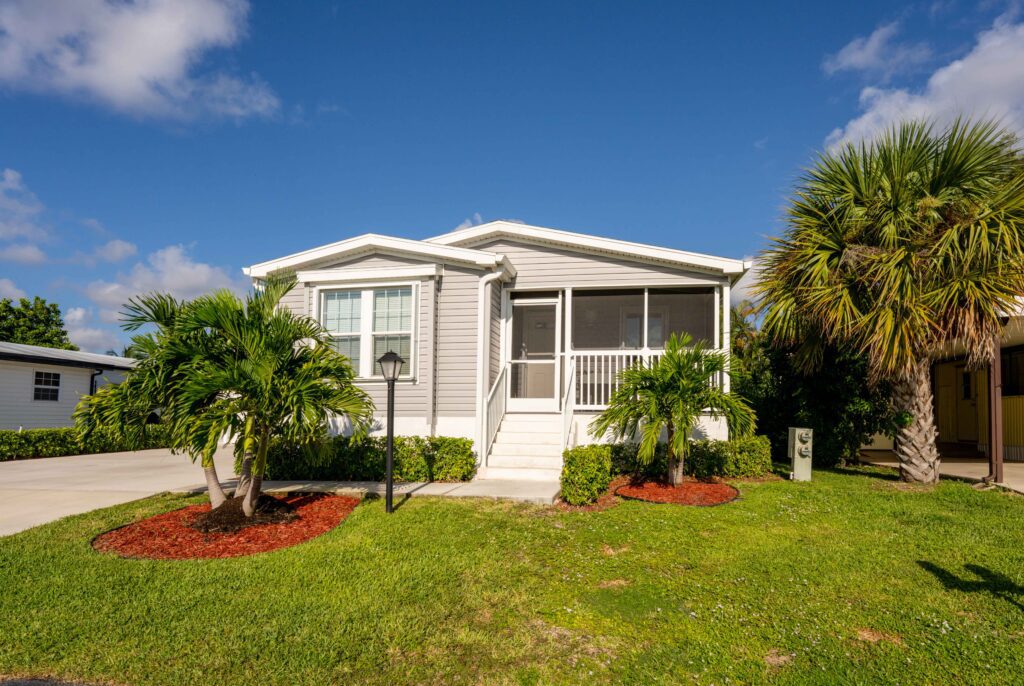Historically, the popularity of manufactured housing began to rise as Americans sought more affordable housing options. However, negative associations become correlated with these communities since their presence was generally focused in lower-income areas. While this trend has been present for decades, a shift in investor demand is occurring due to the current national affordable housing crisis, and now, manufactured housing has again become a solution to one of America’s ongoing economic challenges. In this article, we will review why investors are seeking investment opportunities in manufactured housing and outline how this industry has the potential to grow.
Why Consider Investing in Manufactured Housing?
Traditionally Cost Effective
Manufactured housing has become a viable solution to the current housing crisis as it offers a cost-effective option to build and supply homes for those unable to financially meet the high rents we are experiencing in today’s market.
According to Inland Venture Partners, a commercial real estate and finance group headquartered in Oak Brook, Illinois, the cost to build homes versus manufactured housing is 108 percent higher – recent data revealed that the cost to build a manufactured home equaled $57 PSF versus $119 PSF for site-built homes.
Contributing to this affordability results from how manufactured homes are built. Unlike traditional housing, which requires extensive on-site labor and generally higher construction costs, manufactured homes are constructed indoors via a streamlined process. As a result, these homes are built at lower costs and with higher efficiency.
Historical Low Vacancy
There are roughly 4.3 million manufactured home sites across 43,000 manufactured home communities in the United States. Inland Venture Partners says the average occupancy rate across these communities is 94 percent, and demand is rising. However, construction and supply are not meeting the needs of current demands. It is reported that a third of the country’s communities were constructed between the 1950s through 1990s, with few new communities currently being constructed. As a result, competition has remained, and owners have had minimal challenges filling vacancies.
Generally Limited Maintenance
When investing in real estate, it is imperative to consider maintenance requirements for a property. Generally, when operating commercial spaces, this is determined by the lease structure negotiated with each tenant. However, for manufactured communities, landlords have minimal responsibility. Rather than leasing out the homes, tenants purchase their homes and lease the land from the manufactured community. As a result, landlords have minimal maintenance responsibility, generally only responsible for the communities’ grounds.
Historically Recession Resistant
Manufactured homes have also proven recession-resistant for investors, meaning that even during economic volatility, these assets have historically continued to provide investors with stable, positive cash flow.
Green Street Advisors, a global real estate research firm, reported that between 2004 and 2018, operating income from mobile home parks rose by 87 percent. Through that period, income never declined, even during the Great Recession of 2008.
Contributing to this trend is the cost of moving a mobile home. Moving these homes is expensive, deterring residents from evacuating their houses, especially during economically challenging times. As a result, these high costs of moving from a manufactured home contribute to its historical recession-resistant status and low vacancy.
MH Insider – the nation’s premier online marketplace for buying and selling manufactured homes – reported, “A recent study reveals 90 percent of people are satisfied with their mobile or manufactured home. Seventy-one percent of residents cite affordability as the key driver for choosing manufactured housing. About 62 percent of manufactured and mobile home residents anticipate living in their home for another 10 years, and 38 percent don’t ever anticipate selling their home.”
Potential Tax Advantages
Real estate investing comes with multiple targeted benefits, such as earning income, building equity, and investing in an asset often considered a hedge against inflation. Furthermore, real estate offers various possible tax breaks, including deductions, depreciation, and 1031 exchanges.
Manufactured housing offers a tax advantage that most commercial investments do not provide – accelerated depreciation. Per the Internal Revenue Service (IRS), commercial properties can be depreciated over 39 years, while residential rental properties can depreciate over 27.5 years. Land, however, cannot be depreciated since the land has an indefinite useful life. Manufactured housing falls outside these categories since it only includes land improvements, such as roads, underground pipes, and electrical lines. Per the IRS, land improvements can be depreciated over 15 years since they generally have a shorter useful life. As a result, investments in manufactured housing can be depreciated over 15 years versus zero or 39 years.
Proposed Improved Finance Options
Most recently, the White House proposed a new plan to finance manufactured homes. Currently, financing manufactured homes can be difficult. Unlike traditional homes, manufactured homes rely on personal property financing or chattel lending. However, these loans generally include higher interest rates and shorter-term structures than a conventional or FHA loan. The new plan proposed three changes that will significantly impact buyers.
- Freddie Mac will “will complete a feasibility assessment for the requirements and processes necessary to support loan purchases of personal property manufactured housing loans. If FHFA approval is obtained, Freddie Mac will purchase these kinds of loans to assist with product design and support future loan purchase capabilities.”
- Fannie Mae and Freddie Mac both “released revised purchase targets for manufactured housing loans, which will have the effect of fostering greater liquidity for manufactured housing and increasing delivery of manufactured homes.”
- HUD has recognized “the cost and development time savings provided by manufactured housing. Therefore, “HUD is making it easier to finance new units and [help] manufacturers update their designs to meet changing consumer demands.”
Changes to available financing may improve availability and increase demand for manufactured housing.
Consideration for RV Communities
Many of today’s manufactured housing funds also include recreation vehicle (RV) communities – and therefore, let’s review whether investors should consider these investments for their portfolios.
A Recreational Vehicle (RV) Park is defined as a “parcel of land upon which two or more recreational vehicles are occupied for dwelling or sleeping purposes for no more than 60 days during 120 day period.” Simply put, they are campsites for RVs.
Throughout the last decade, RV vacations and camping have increased in popularity, and funds are taking advantage of this growing trend to grow and further diversify their portfolio offerings. Inland Venture Partners reports that American travel patterns are contributing to these new trends: more than 11 million families own an RV, with most owners aged between 35 to 54. Of these 11 million families, 90 percent will take at least 3 RV trips annually.
From the investor’s perspective, these investments offer different benefits. First, it taps into the hospitality sector, adding more diversity to one’s portfolios. Secondly, with the average cost at an RV park equaling $45 per night, this lodging option is more viable for Americans who want to travel during economic downturns.
A Growing Asset Class
Demand for manufactured housing is rising, and US developers are taking action to add more inventory to help meet rising needs. According to MH Insider, “Thirty-three U.S. manufactured home builders operating from 141 plants … across the country produced 105,772 housing units during 2021. Shipment levels of new manufactured homes eclipsed the 100,000 mark for the first time in 16 years.”
For investors, potential returns on manufactured housing are more attractive, especially compared to other asset classes. In a recent analysis shared by Inland Venture Partners, “Historically, manufactured housing returns have outperformed the returns offered by other core commercial real estate sectors. As of March 30, 2022, Green Street Advisors Commercial Property Return Index reported manufactured housing returns at nearly 391 percent, since March 2021, surpassing the next leading sector by 33 percent.”
“Green Street predicts a 2022 capitalization rate of 4.0 percent and a positive four-year 4.9 percent growth rate in net operating income (NOI) for the manufactured housing sector from 2023-2026 forward. Additionally, Greenstreet projects the manufactured housing sector to achieve a 3.45 percent growth in NOI over the long term (2027 and beyond), which is expected to lead other core real estate sectors in terms of long-term NOI growth by at least 0.3 percent.”
Growth in the sector is believed to be inevitable, providing a solution to today’s challenging housing crisis. Those willing to overcome the negative historical associations with manufactured housing have the potential to benefit from positive returns.





